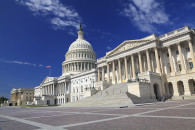The USDOT’s Pipeline and Hazardous Materials Safety Administration (PHMSA) took a big step forward yesterday in upping the ante for shippers who knowingly violate the regulation contained in the US 49 CFR Parts 100 – 185 Hazardous Materials Regulations (HMR). Increases in penalties had been bandied about the industry for some time, and have now…
In Geneva, UN Dangerous Goods Experts Hash Out Coming Regulatory Changes
The structure of the Hazardous Materials Regulations (HMR) in the US 49 CFR Parts 100 – 185 may seem byzantine at first; it’s hardly light reading. However, it is actually built upon a very sound and logical structure. US regulations are in large part based on and or harmonized to the Dangerous Goods regulations (it’s…
Hazmat legislation: TSCA reform proves Congress can still do its job
The Frank R. Lautenberg Chemical Safety for the 21st Century Act—an overdue reform of the Toxic Substances Control Act of 1976, better known as TSCA—has passed both houses of Congress. President Obama will soon sign it into law. This is obviously big news for the chemical industry, but it should be big news for all…
20 Years On, Remembering (and Learning) from ValuJet Flight 592
Twenty years ago today, ValuJet Flight 592 took off from Miami’s airport only to within minutes be destroyed after an intense fire in the cargo hold sent the aircraft into a nearly vertical dive which almost totally obliterated it in Everglades swampland. Miami remembers, as do I, as Dangerous Goods Manager with IATA at the time.…
How can you keep customer returns of Dangerous Goods compliant?
Q: Reviewing the PHMSA HM-253 Final Rule on reverse logistics issued March 31, it appears it doesn’t really address returns from consumers to suppliers or manufacturers. How do you suggest keeping these shipments compliant? You are correct. Although the new PHMSA ruling contains regulatory relief for reverse logistics shipments that originate from retail stores, it…
Domestic shippers take note: PHMSA to adopt ICAO lithium battery rules
When the International Civil Aviation Organization (ICAO) and International Air Transport Association (IATA) imposed new lithium battery air shipping restrictions April 1, 2016, many shippers whose products never cross US borders believed that the new rules didn’t apply to them. Because those restrictions have not been adopted into the U.S. Hazardous Materials Regulations (49 CFR),…
USDOT/PHMSA formalizes requirements for “Reverse Logistics”
In today’s edition of the US Federal Register, the United States Department of Transportation’s (USDOT) Pipeline & Hazardous Materials Safety Administration (PHMSA) published a final rule under Docket # PHMSA-2011-0143 (HM-253), RIN 2137-AE82 under which the agency sets forth specific rules to regulate the transport of materials under the so-called “Reverse Logistics” principle. This function…
FAA Reauthorization Legislation Focused on Lithium Batteries
Bob Richard and Neil McCulloch co-contributed to this article. When a US Senator proposes to spend tax dollars on a committee to “promote research and new standards for the safe manufacture, use or transportation of lithium batteries,” I can only sigh in frustration. This is exactly what was recently proposed by Sen. Bill Nelson, D-Fla.. …
Federal Register publishes HM-233F revisions to the HMR
The United States Department of Transportation’s (USDOT) Pipeline and Hazardous Materials Safety Administration (PHMSA) yesterday published the newest rulemaking under its HM-233 Docket family. This incorporates various aspects of previously issued Special Permits (SP’s) into the body of the regulations. Specials Permits are administrative actions that grant specific users permission to do something outside of…
New Year, New Revisions to DG Regulations for IATA and IMO
As often occurs at the turn of the year, both the International Maritime Organization (IMO) and the International Air Transport Association (IATA) have released updates to their respective Dangerous Goods Regulations. In the case of the IATA regulations, much of it has to do with revisions to rules surrounding lithium batteries. Please see our relevant…







